Every time I come to Juárez, I swear it is for the last time. And then, I come again and again. I seldom write about these visits, so that is not why I come. I seldom enjoy these visits, so that also fails to explain my returns . . . I think it is about tasting the future. Juárez is the page where all the proposed solutions to poverty and migration and crime are erased by waves of blood. -Murder City: Ciudad Juárez and the Global Economy’s New Killing Fields, by Charles Bowden (Nation Books, 2010)
In Murder City: Ciudad Juárez and the Global Economy’s New Killing Fields, Charles Bowden bears witness to the carnage in Juárez, a city whose name has become synonymous with violence, and is commonly referred to as the most violent city in the world by the media. I have many fond memories of Juárez, but had not gone back since the violence escalated. So I decided to return to see what was left of those memories. What had survived?
From 1993-2000 Juárez was part of my stomping grounds, when I lived across the river in El Paso, TX. I loved spending time in Juárez with friends who introduced me to its vibrant nightlife of music and theater. I also helped organize environmental conferences and events in Juárez as part of my job with an El Paso-based toxics group.
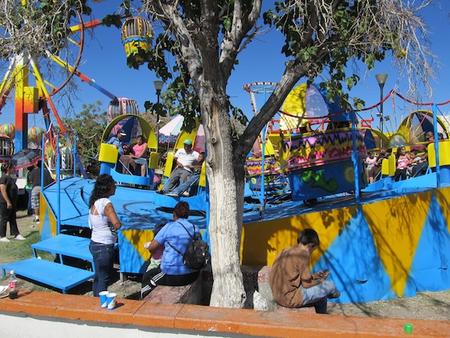
Juárez did have its rough side then: impoverished neighborhoods housing maquila workers and frequent reports of disappeared young women who vanished in the night. There were a couple hundred murders a year, mostly between drug gangs, which pales with what is happening now. In 2010 Juárez had over three thousand murders.
In 2006 Felipe Calderón became president after a highly disputed election, and the U.S. government offered military aid to Mexico to fight the drug war as part of the Merida Initiative. In “Mission Accomplished” fashion Calderon put on a military uniform and ordered the troops into action.
Mexico’s strategic alliance with the U.S. has caused the country to pay a terrible price, and has even led Calderón to state that legal regulation of drugs might make sense. Since 2008 over forty thousand Mexicans have died a violent death, almost a quarter of those in Juárez alone. The U.S. government policy is to throw fuel on the fire.
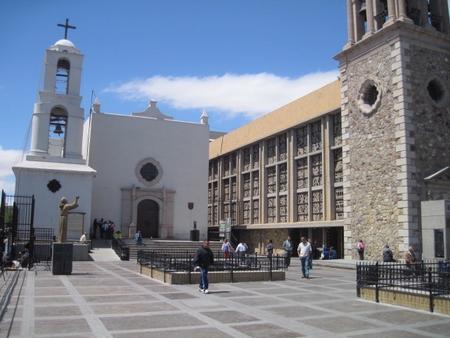
This year I’ve renewed my relationship with Juárez making several visits. Tourism has dried up and many businesses are shuttered, but I was relieved to discover that much of what I remembered has survived. People on the street seem as friendly as ever. Apprehension over safety concerns quickly dissipated.
At any time of the day or night, the machine-gun fire can cut you in half. This can happen anywhere. -Murder City
Despite the high murder rate the chances of being caught in any crossfire in Juárez are extremely remote. I’ve never heard gunfire there and a good friend who has lived in Juárez most of his life told me he has never witnessed any violence in the streets. Also there is no evidence to indicate that foreigners in Mexico or Juárez are being systematically targeted.
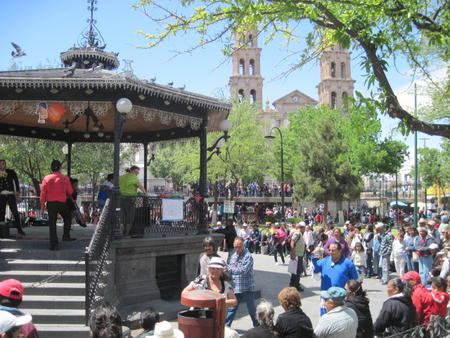
One of the first things I’ve always done after entering Juárez is to purchase a newspaper from the same friendly street vendor I’ve known for nineteen years. Newspapers in Juárez vividly document the violence: In October a front page photo showed two severed heads left on the street by a drug cartel with a sign stating they were “signing people up” at that location.
Even reporting about the drug violence is risky business. Bowden writes extensively in Murder City about “El Diario de Juárez” reporter Armando Rodriguez, who wrote about drug-related crime until he was gunned down in 2008 as he was driving his daughter to school.
Who in their right mind would turn down a chance to consume drugs in a city of poverty, filth, violence, and despair? -Murder City
I search the newspaper for evidence of Juárez’s redeeming qualities. Recent articles highlighted a chess tournament for youth, university students making solar ovens, and a university sponsored “Japan Fest” where students dressed in traditional Japanese attire.
In Juárez life goes on. A library I visited had a group of adults and children practicing their English skills in a free class. In the main plaza a large crowd watched a dance performance while a clown entertained children. The cathedral was packed for a mass. I have frequented the same restaurants for two decades to join friends for coffee or a meal. My return to one restaurant featured a friendly and talkative waiter who must have refilled our coffee five times as if he didn’t want us to leave.
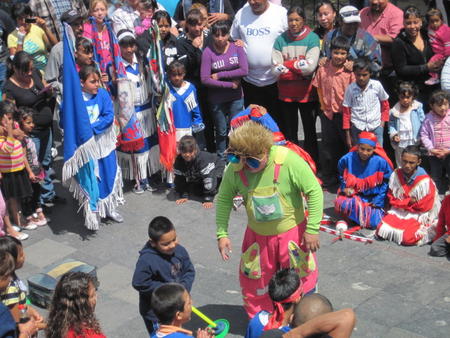
A friend who is studying for his doctorate in sociology in Juárez has written about people visiting parks as a form of resistance, not letting fear keep them holed up at home. An article in the newspaper told about a murder that had occurred on a soccer field in a park. The field sat empty for a time, then everyone was back playing soccer.
In October President Calderón visited Juárez to inaugurate “Juárez Competitiva,” a month-long series of events designed to improve the city’s image. Highlights included a rock concert featuring the Mexican band “Maná,” a tequila festival, and motivational speeches by Mikhail Gorbachev and Rudolph Giuliani.
Events in the streets sent a different message. One day the dismembered bodies of four men were found scattered throughout the city. The final tally of Juárez murders for October was 153.
I’ve always promoted Mexico as a travel destination. The country has wonderful traditions and some of the most hospitable people in the world, including in Juárez. Overall Mexico is still a safe place to visit. The most recent U.S. State Department travel warning on Mexico states, "Millions of U.S. citizens safely visit Mexico every year, including more than 150,000 who cross the border every day for study, tourism, or business and at least one million U.S. citizens who live in Mexico."
A few areas in Mexico have become extremely dangerous. The rural Valle de Juárez (Juárez Valley) has experienced some of the worst levels of violence in the entire country. In October I visited the upper Valle de Juárez, located close to urban Juárez. Everything seemed fine, but friends living there advised me to go no further due to the risk.
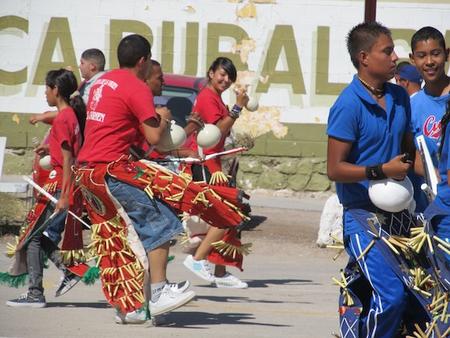
In the lower Valle, the town of Guadalupe has seen scores of people killed including a former mayor and other city officials. Most of the town’s residents have fled. Burnt-out and abandoned homes resemble a battle scene. The remaining residents live in an environment of fear and terror.
Many are fighting for peace and justice in Juárez. Some human rights activists, like Josefina Reyes and Susana Chavez, have been murdered. Others have courageously filled their shoes. In June I traveled to Juárez when Mexican poet Javier Sicilia's peace caravan arrived and thousands of Juárez residents turned out to participate in rallies to remember the dead and call for an end to the drug war. It was incredibly inspiring. About one hundred folks marched over from El Paso to join the event and show their solidarity.
The importance of solidarity can’t be underestimated. On November 1, police in Juárez arrested fourteen activists—known as "indignados" and acting in alliance with the international movement protesting economic injustice—as they were trying to paste nine thousand paper crosses around the city to honor the victims of the violence. Police then arrested fifteen others who protested outside the jail. Videos showing the excessive use of force by police were posted on YouTube within minutes and social networks generated thousands of messages protesting the arrests. The huge public outcry resulted in everyone’s release the following day, though charges are still pending.
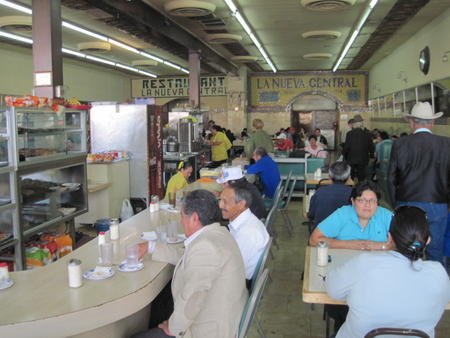
Juárez’s image in the media could hardly be worse. The city is becoming increasingly more isolated from the world. Books like “Murder City” are a double-edged sword, drawing much needed attention to the violence in Juárez, but probably convincing most readers that it would be foolish and reckless to ever go there. Fewer international visitors mean less solidarity, less accompaniment, and fewer tourist dollars. The collateral damage from Juarez's one-sided portrait in the media is enormous, and one of the saddest aspects are those who become too afraid to visit their neighbor.
Richard Boren is a freelance writer, environmental activist, and educator based in the Arizona/Sonora borderlands. He blogs at The Hobo Dispatch. For more from the Border Wars blog, visit nacla.org/blog/border-wars. And now you can follow it on twitter @NACLABorderWars. See also the May/June 2011 NACLA Report, Mexico's Drug Crisis; the Jan/Feb 2009 NACLA Report, Taking on Policy in the Obama Era; and the May/June 2007 NACLA Report, Of Migrants & Minutemen.

